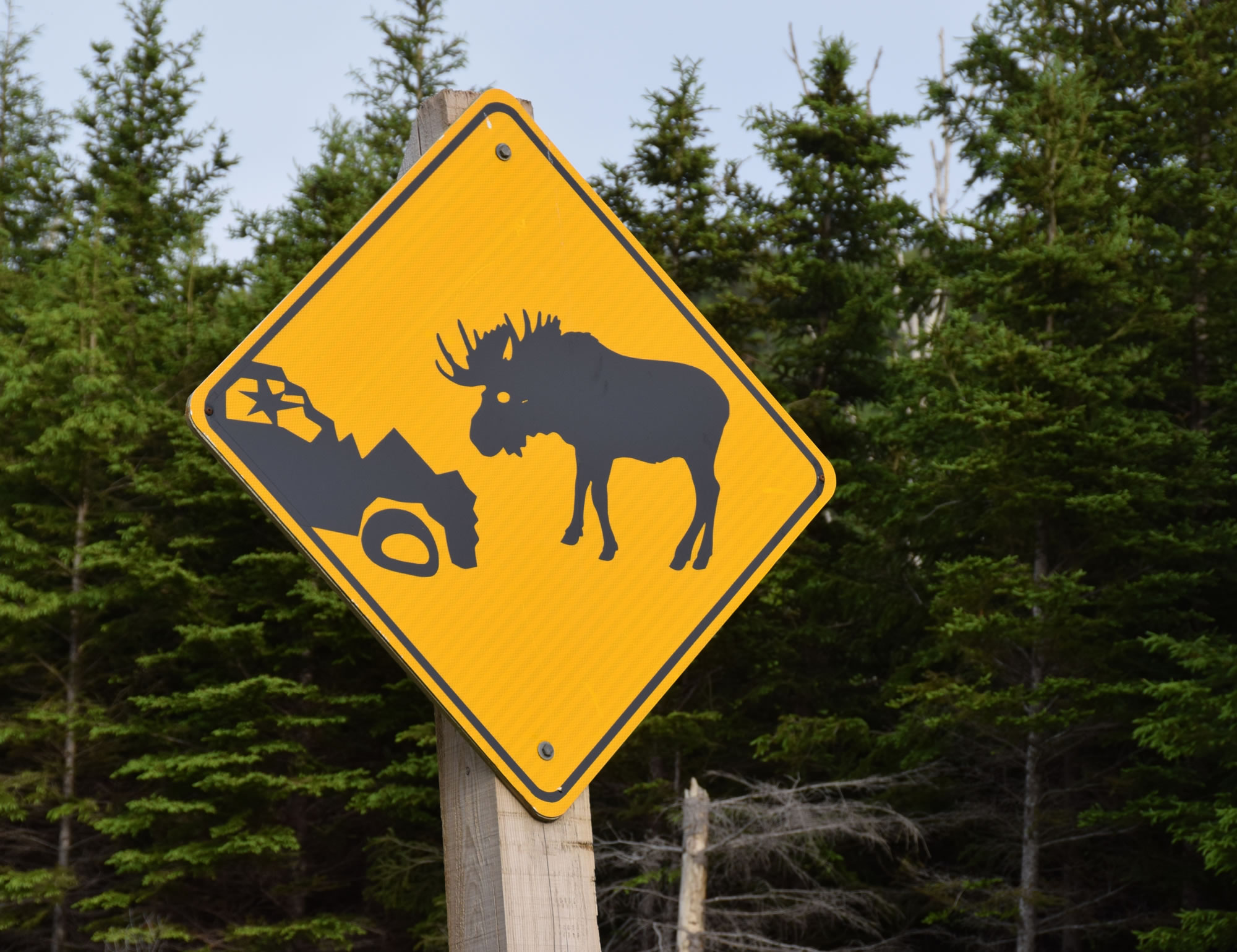Will the law protect those involved in an accident where the at-fault party is a moose?
In October 2006, two women are driving between Prince Rupert and Terrace. The driver, Ms. Leask, travels around a corner and sees a mother moose and her calf ahead. Despite efforts to avoid the animals, she clips the rear end of the mother moose with her driver side mirror and hits the calf with the passenger side corner of her truck.
The passenger, Ms. Racy, suffers soft tissue injuries in the collision. She sues Ms. Leask for negligence in BC Supreme Court case Racy v. Leask.
Ms. Racy says that Ms. Leask failed to keep a proper lookout and slow down quickly enough to avoid hitting the moose.
The Defence Lawyer argues that Ms. Leask’s efforts to slow down were reasonable and there was nothing she could do to avoid hitting the moose.
To determine liability, the Judge reviews previous cases where drivers are found negligent in accidents involving wildlife. The following are indicators of negligence in these cases:
- Lane of travel: when the driver is travelling in the wrong lane.
- Roadside warnings: failing to adhere to roadside warning signs.
- Lack of awareness/Driver distraction: drinking coffee, listening to music, using electronic devices, etc.
- Excess speed: driving over the speed limit.
- Failure to reduce speed: failing to reduce speed when road conditions are poor due to inclement weather and/or limited light.
In Racy v. Leask, the Judge notes that there are no posted signs alerting drivers to possible moose crossings. There is no evidence to suggest that Ms. Leask was driving over the speed limit, or that she failed to brake appropriately. In fact, the Judge says the accident may have been worse if Ms. Leask had swerved, resulting in a head on collision with the animal.
The Judge excuses Ms. Leask from liability and dismisses the plaintiff’s claims.







